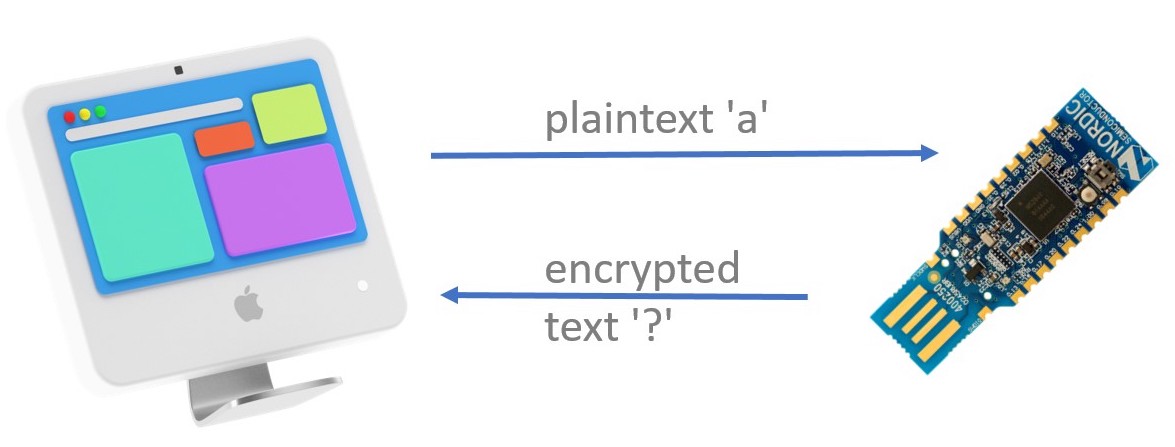Radio Puzzle

Your task in this section is to decrypt the substitution cipher encrypted ASCII string stored in the Dongle using one of the stack-allocated maps in the heapless crate. The string has been encrypted using simple substitution.
Preparing the Dongle
✅ Flash the puzzle.hex program on the Dongle. Follow the instructions from the "nRF52840 Dongle" section but flash the puzzle.hex program instead of the loopback.hex one -- don't forget to put the Dongle in bootloader mode before invoking nrfdfu.
Note: If you experienced USB issues with
loopback.hexyou use thepuzzle-nousb*.hexvariants.
Like in the previous sections the Dongle will listen for radio packets -- this time over channel 25 -- while also logging messages over a USB/serial interface.
Sending Messages and Receiving the Dongle's Responses
✅ Open the beginner/apps folder in VS Code; then open the src/bin/radio-puzzle.rs file. Run the program.
This will send a zero sized packet let msg = b"" to the dongle.
❗ The Dongle responds to the DK's requests wirelessly (i.e. by sending back radio packets) as well. You'll see the dongle responses printed by the DK. This means you don't have to worry if serial-term doesn't work on your machine.
✅ Try sending one-byte sized packets. ✅ Try sending longer packets.
What happens?
❗ The Dongle responds to the DK's requests wirelessly (i.e. by sending back radio packets) as well. You'll see the dongle responses printed by the DK. This means you don't have to worry if serial-term doesn't work on your machine.
Answer
The Dongle will respond differently depending on the length of the incoming packet:
- On zero-sized packets it will respond with the encrypted string.
- On one-byte sized packets it will respond with the direct mapping from a plaintext letter (single
u8value) -- the letter contained in the packet -- to the ciphertext letter (u8value). - On packets of any other length the Dongle will respond with the string
correctif it received the decrypted string, otherwise it will respond with theincorrectstring.
The Dongle will always respond with packets that are valid UTF-8 so you can use str::from_utf8 on the response packets.
This step is illustrated in src/bin/radio-puzzle-1.rs
From here on, the exercise can be solved in multiple ways. If you have an idea on how to go from here and what tools to use, you can work on your own. If you don't have an idea what to do next or what tools to use, we'll provide a guide on the next page.